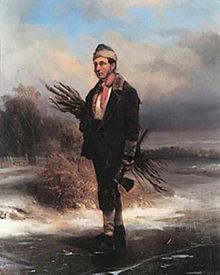|
Fontaine Art Studios
hand-painted reproductions on canvas
|
Direct Supplier with 179 Artists.
Stable Quality, Low Price, Fast Shipment.
|
|
Fontaine Art Studios
hand-painted reproductions on canvas
|
Direct Supplier with 179 Artists.
Stable Quality, Low Price, Fast Shipment.
|
 Cornelis SpringerCornelis Springer (1817-1891)Cornelis Springer learned the art of painting under Hendrik Gerrit ten Cate and later under Kaspar Karsen. He soon began to concentrate on townscapes. Springer spnet most of his life in Amsterdam, although he travelled throughout the Netherlands to draw his sketches. These he later incorporated into his studio work: townscapes in which he generally remained true to life, except for one or two details. Springer was especially celebrated for his numerous depictions of town halls in Dutch cities and the massive canvas he painted together with Karsen for the Rembrandt anniversary festival in Amsterdam, 'View of The Hague from the Delftse Vaart in the 17th Century'. b Amsterdam, 25 May 1817; d Hilversum, 20 Feb 1891). Dutch painter and printmaker. As the son of a carpenter he was initially destined to become a house painter. After primary school he served an apprenticeship with the house and carriage painter Andries de Wit. His eldest brother, Hendrik Springer (1805–67), an architect, taught him architectural and perspective drawing. From 1827 he was registered at the Amsterdam Akademie voor Beeldende Kunsten, where he worked under Jacobus van der Stok (1795–1864) and Herman Gerrit ten Cate (1803–56). At the age of 17 he entered the Exhibition of Work by Living Masters (1834) in Amsterdam and continued to exhibit there until 1890, sending more than 120 paintings in all. In 1835 he studied with the architectural painter Kaspar Karssen (1810–96). From him he learnt how to paint, in a conventional Dutch manner, entirely or partially imaginary townscapes of warmly-lit 17th-century buildings, a genre that was to dominate his output until the mid-1850s (e.g. the Walburgis Church in Arnhem , 1841; Arnhem, Gemeentemus.). Auction Houses that have sold Springer - 28
By the middle of the nineteenth century, there was a marked increase in the purchasing power of the Dutch collector. Although this reflected an overall strengthening of the economy, times were still affected by short periods of "boom-and-bust". In parallel to this, commercial activities were recording new growths, affecting the art market in many new ways. One of the challenging novelties of this emerging market involved the gradual liberation of the artist from private patronage. Indeed, due to the increasing demand for works of art, artists were beginning to distance themselves from the tedious whims of temperamental patrons in order to supply an anonymous and widespread purchasing public. This shift in patronage affected the nature of artists' productions. Now, they were submissive to the changes in public taste and needed to follow - and even pre-empt - the latest variations in contemporary fashion. By specialising in one genre, the painter could ensure a particular part of the market for himself, commanding the prices that they wanted to ensure a steady income. Cornelis Springer (1817-1891) ranked among those few painters who specialised in a particular field and whose regular production of very fine paintings supplied growing consumer demand. |
Copyright © 2006-2024 paintingswholesaler.com, All Rights Reserved.
EMAIL: paintingswholesaler@gmail.com